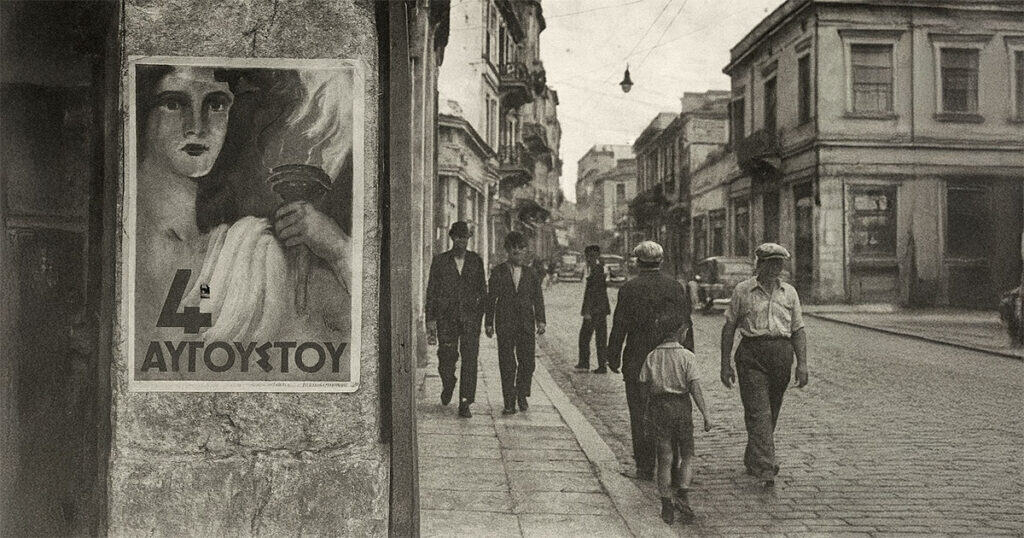Usually I write an article about my experiences as a Greek-American, but today (and few times throughout the year) I will take a break and let my father, Jerry (Vangeli) Karapalides, tell his stories about growing up in Greece back in the old days, or his visits back to the old country. So here’s my Dad’s story of a small bridge in the village. Enjoy!
Bridges… we all cross them during our travels. Big, small, wooden, steel and sometimes covered. Even in my village of Sklithron, in the district of Florina, there is a small bridge located near the St. Demetrios Church and the cemetery, heading east in the “Klisoura” section of the village. The bridge spans the Stara Reca (“Old River”) and is constructed of cement and heavy wires. On each side there are 4 small cement columns and two lines of metal tubes.
Why, do you ask, that I write about an insignificant bridge in a small village in Greece and how does that apply to the current Greek economic crises? Simply put – stubbornness.
To explain, I have to take you back to October 28, 1940 when Mussolini declared war on Greece and for 6 months he tried to invade but was driven back to Albania. Hitler stepped in and by April, 1941 the Germans had control of Northern Greece and were heading south towards Athens. As a boy of 14, I remember the Germans coming through with columns and columns of tanks, trucks filled with soldiers, and war supplies. It was both exciting and frightening.
Sklithron has three rivers and one brook which all meet on the outskirts of the village and become the Old River that runs through the village cutting it in half. At that time, there were actually two bridges, a large one near the bazaar and the small one near St. Demetrios. The bridges were very important since it was impossible to cross the Old River without the bridges, except in July and August, when the water was very shallow due to lack of rain and irrigation in the fields. During those months, you could walk across the water.
One morning in August, 1942, a brigade of German troops, including 25 Tiger tanks, came down from the mountain side and through the village. It was a very big thing to see all of these German soldiers and 25 Tiger tanks. The commander was in the lead tank and sat on top, reading his map and directing the column where to go. He finally arrived at the small bridge near St. Demetrios Church. As he slowed, he looked down at the map and then ordered his tank to cross. Unfortunately, the tank was wider than the bridge and the tank hit two of the columns on the bridge and knocked the columns down. He ordered a general halt.
The villagers all came out screaming and yelling for the commander to stop and not proceed. Of course, the commander did not speak Greek and no one in the village spoke German. But, someone got Mr. Stasios who spoke English, which the German commander also spoke. Mr. Stasios explained that the bridge was too narrow for the tanks and it could not hold the weight of the tanks and if he continued, the entire bridge would collapse. The German commander simply replied, “Nein – No. My orders are to cross this bridge to get to the center of town.”
When Mr. Stasios translated this to the villagers, they erupted in more complaints, throwing their arms up and screaming at the commander. The commander stayed stern and unmoving, and continued to say “Orders must be followed.” Mr. Stasios showed the commander that there was only a foot or two of water in the river and he could easily cross. “Nein – orders,” was the reply.
After Mr. Stasios explained that the commander would be more delayed in completing his orders if he crossed and the bridge collapsed and they had to repair the tanks, the German commander finally relented and the tanks crossed through the river and completed their mission. We learned later that an entire German division had been conducting war-games in the area.
In the year 2000, I visited Sklithron and went to see the bridge and to my surprise, the columns had never been repaired. I don’t know if the villagers wanted to have a reminder of the dark days of WWII, or, as I truly imagine, they just didn’t care. I have been told that as of today, the columns are still not repaired.
Now to the moral of the story. To understand today’s German attitude toward the Greeks and dictating what the Greeks will do, through the austerity measures, we need to look back to August, 1942 and the tank commander in Sklithron. “Nein” was his reply. “Orders must be followed” he continued to say. He saw for himself that the tanks could not cross but his orders said to cross. He was not willing to change his orders and, in his mind, could not change the orders. This was plain stubbornness. Orders were orders. But in the end, after sheer determination by Mr. Stasios and the villagers, and using logic (invented by the Greeks!) the Germans were convinced that they needed to change the orders to complete the mission. Isn’t that what the Greeks need to do today? Make the Germans understand that maybe the orders need a little changing!
Unfortunately, we still need to address the repair of the bridge. Over 70 years later, the Greeks have not repaired the bridge. Why? Maybe they too are stubborn. Maybe the Greeks can learn a little planning and organization from the Germans and the Germans can learn a little logic from the Greeks. God Bless them all!








